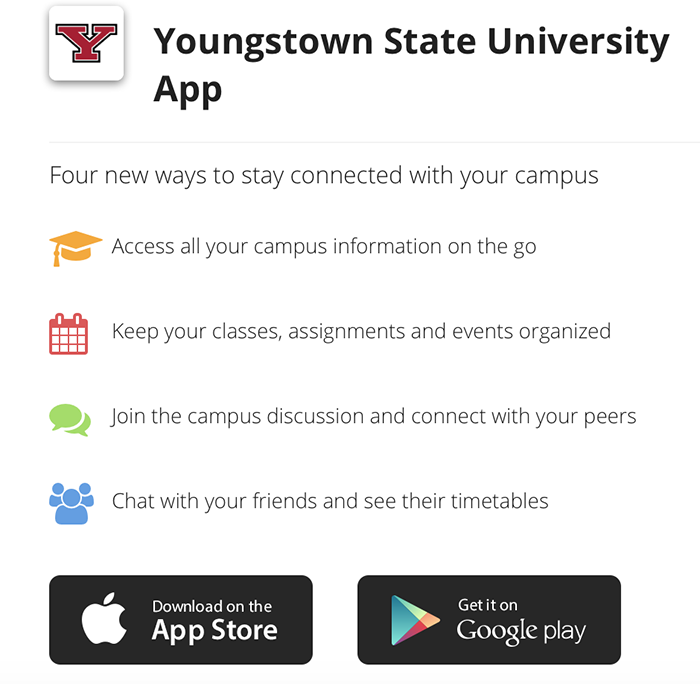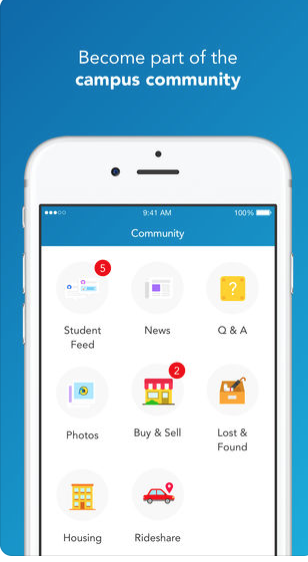Generation Mobile: Using Technology to Improve Student Engagement
I joined a webcast on the role of technology in improving generation-Z students’ experience and retention. The directors of 3 American higher education institutions presented their insight into how to reach out to this generation in more effective ways. Dr. Carney Strange (Professor Emeritus, Bowling Green State University) moderated the webcast that was presented on June 13, 2017. In this free webinar entitled “Generation Mobile : Using Technology to Improve Student Engagement” (registration required), you can hear how the institutions used an app to better connect their students to the activities and services on campus. OOHLALA, the app developer created a college branded app and customized the app to fit each college’s needs.
Who Are the Students We Are Dealing With in Our Institutions Now?
According to Carney Strange,
- Gen-Z is the generation of students that was born between the 1990ies and about 2012.
- They constitute about 18% of the population of the USA.
- They have grown up in a world where tech is in full swing.
- They have never known a world without cell phones, iPods or texting.
- They are into instant gratification; “I wanna see it now”. If you don’t know it, you Google it. But as a result of this, solving complex problems particularly challenges them.
- GenZs have their thumb on their phones constantly checking their devices up to 150 times a day.
Carney Strange makes the case that because Gen-Z students look for information that is both immediate and relevant, mobile devices are tailor made for the way in which they encounter the world around them. Rather than a distraction to learning, he claims that smartphones are a powerful attraction to learning. We need to ask students to take out their mobile devices and as teachers we need to learn how to use them to be able to reach the students.
Defragmenting the Student Experience
For Youngstown State University in Ohio it became increasingly difficult to reach students and connect them to the services they needed. Bulletin boards and handouts were simply not sufficient anymore.
The students were all using their mobile devices so their expectation was that they should be able to use their phone to interact with the institution, whether to apply online, to rent an apartment through the campus housing service, or just to engage in the activities on campus.
Furthermore, campus resources were decentralised. The Youngstown State University App allowed the different college services to consolidate all of the digital resources. The app offered a centralized access to the learning management system, the college’s various Facebook and Twitter accounts, the school email inbox, etc. Now the students don’t have to hunt to find information. 72% of 1st year students downloaded the app and were able to learn about the campus services and resources and ask their questions.

Features of the Youngstown University App
Increase Sense of Belonging on Campus
Carney Strange says that our role as educators is first to include students, secondly to secure them, third to engage them and finally to invite them into learning community of higher education.
When we put together the most powerful set of conditions that promote learning, it all comes down to community. The goal is to create experience of community for all students.
Lindsey Wilson College in Kentucky noticed they had a lower retention rate for first year students from one fall semester to another. They identified several reasons among which the college’s traditional communication channels (email, social media, poster, website) were not successful in creating a sense of community. The college was not meeting students “where they were at.” It did not take an exhaustive research to see that in between classes the students were on their phones. Thus the college decided to address some of the students’ challenges by developing a campus app that is a one-stop shop for academics, social interaction, college services, maps, Q&A.
The college’s mobile app has made the students’ life easier. They get feedback when they need it and informational resources are now at their fingertips. 85% of students adopted the app. 75% of students agree when using the app, they feel like they belong to the college community.
The app brought a culture shift and helped develop a sense of community by allowing students to post on the college wall. The diversity and sheer number of posts was surprising. The students
- Expressed their pride in the college
- Celebrated getting through a particularly difficult biology and chemistry exam
- Applauded a win over a rival sports team
- Took pride in what their clubs or organisations are accomplishing
- Discussed issues like black history month, sexual assault awareness or whatever is going on
- Set up a type of market place to sell back their books

Lindsey Wilson College App’s Community Page
Administrators were a little nervous at first. They apprehended that the types of posts made on the college’s wall would not be appropriate. The college found however that the students policed themselves and adopted behaviours different from those they have on social media. When they wanted to express frustration they did so using thoughtful questions and saying that they were looking for thoughtful answers. Students recognised what the platform was meant to communicate and that professional language was to be used.
85% of students feel the app provides them with a platform to voice their opinion at their institutions. When students have a voice it makes them feel engaged furthermore initial research shows that it fosters perseverance. Indeed, using the app as a resource lowered the attrition rate of first year students at Lindsey Wilson College. There was an 84.8% semester-to-semester retention rate among app users but only a 67.3% semester-to-semester retention rate among non-app users.
Impact of Mobile App on Interaction on Campus
The development of a campus community following the adoption of a mobile platform has created solutions that were unanticipated and definitely a benefit to Oglethorpe University in Atlanta.
Indeed, students are using the app as a community to find the information they need. Students can go on the app, throw out a question and receive a rapid response from another student. Instead of waiting to contact someone in an office somewhere, students are helping students with certain issues. Through the technology the students are engaging with each other every day.
As student have become more aware of how to engage on campus, the institution has seen an uptake of student engagement across the board : more students going to athletic events, more students going to town halls, more students checking in for tutoring according to Shane Pruitt Director of Student Engagement.
At the end of the day it’s all about relationships, but it’s very difficult to form relationships in today’s age if students don’t know where to go and this platform has allowed us to actually see more students come to the doors of our office because they know they can trust us to provide the information they need to be successful. So I actually think the app is helping our students engage overall more so than before.
The panellists on this webcast agreed that some non-academic factors, such as the complexity of college life, created a challenge that caused many students not to persist in their studies. They also recognized the fact that student engagement, not only in their classes but also in life on campus, is crucial to retention. A growing body of research suggests that rise of mobile devices can be a critical solution to improving the student experience. For this reason, the institutions decided to create college specific apps in order to try and reach students where they are : on their smartphones. Mobile technology has helped administrators and staff put their finger on the pulse of the campus.
How do you use technology to improve student engagement? Does your college have a mobile app for student engagement?

